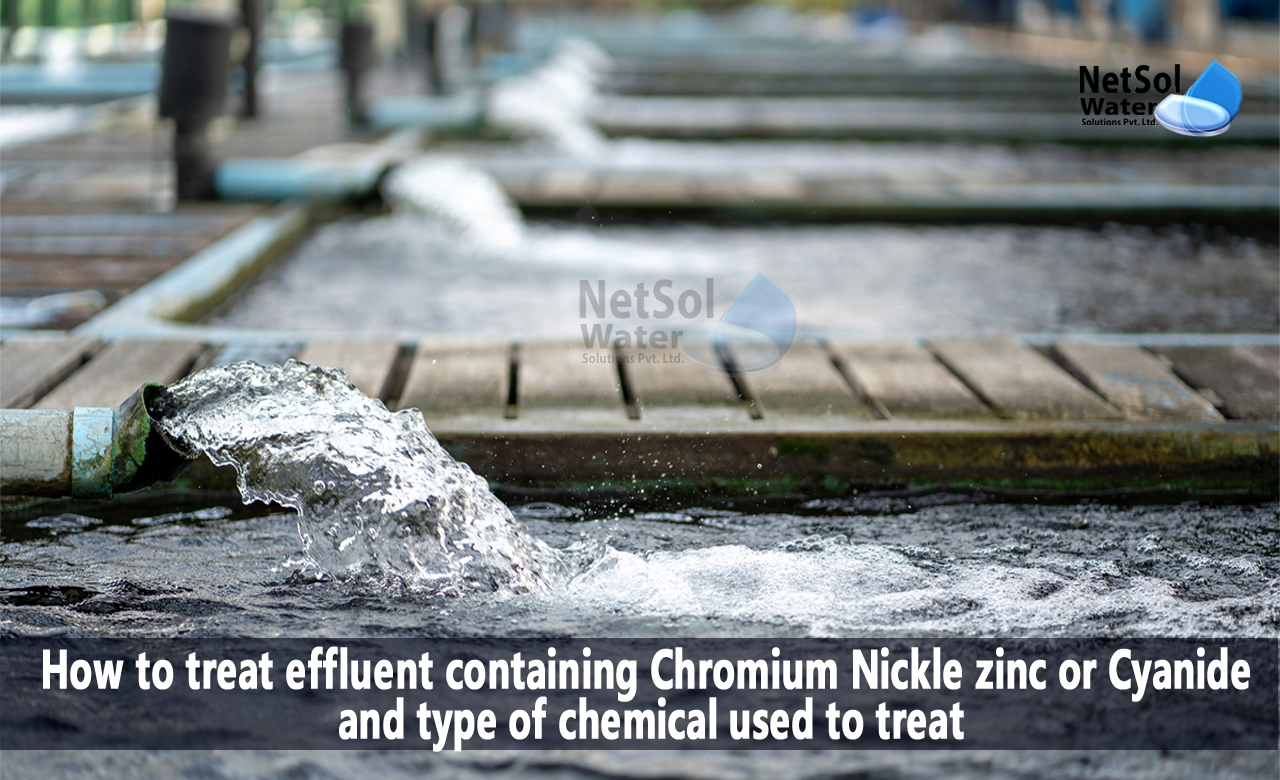How to treat effluent containing Chromium, Nickle, zinc, or Cyanide?
Effluent from plating units can contain various harmful substances, including chromium, nickel, zinc, and cyanide, which can pose a serious threat to the environment if not treated properly.
In this blog, we will discuss how to treat effluent containing these substances and the different types of chemicals that are used to treat them.
Chemical Treatment Processes for Effluent Containing Chromium, Nickel, Zinc, and Cyanide
- Precipitation and Coagulation: In this process, chemicals such as lime, caustic soda, and ferric chloride are added to the effluent to increase the pH level and cause the metals to precipitate out of the water. Coagulants such as alum, polyaluminum chloride, and ferric sulfate are then added to the mixture to form larger particles that can be easily removed by sedimentation or filtration. The chemical reaction involved in this process can be represented as follows:
2Cr(OH)3 + 3Ca(OH)2 → Cr2O3↓ + 3Ca(OH)4
- Ion Exchange: This process involves passing the effluent through a resin bed that contains ion exchange media such as zeolite or polystyrene sulfonate. The media exchanges the metal ions in the effluent with other ions such as sodium or potassium, which are then removed from the resin bed. The chemical reaction involved in this process can be represented as follows:
Na2Ze + 2R-X → R2Ze + 2NaX
- Membrane Filtration: This process involves passing the effluent through a membrane that selectively removes particles based on their size and charge. The most common types of membranes used for this process are reverse osmosis (RO) and nanofiltration (NF). The chemical reaction involved in this process is physical and does not involve any chemical reactions.
- Electrochemical Treatment: In this process, an electric current is passed through the effluent, causing the metals to be ionized and attracted to an electrode. The metals are then removed from the electrode and collected for disposal. The chemical reaction involved in this process can be represented as follows:
Fe2+ + 2e- → Fe
Common Chemicals Used for Effluent Treatment
- Lime (CaO): Used to increase the pH level of the effluent and to precipitate out metals such as chromium and zinc.
- Caustic Soda (NaOH): Used to increase the pH level of the effluent and to precipitate out metals such as chromium and zinc.
- Ferric Chloride (FeCl3): Used to precipitate out metals such as chromium and nickel.
- Alum (Al2(SO4)3): Used as a coagulant to form larger particles that can be easily removed by sedimentation or filtration.
- Polyaluminum Chloride (PAC): Used as a coagulant to form larger particles that can be easily removed by sedimentation or filtration.
Conclusion
Effluent from plating units can contain harmful substances such as chromium, nickel, zinc, and cyanide, which can pose a serious threat to the environment if not treated properly. Chemical treatment processes such as precipitation and coagulation, ion exchange, membrane filtration, and electrochemical treatment are commonly used to treat effluent containing these substances. Various chemicals such as lime, caustic soda, ferric chloride, alum, and poly-aluminum chloride are used to treat the effluent. By using these chemical treatment processes and chemicals, plating units can effectively treat their effluent and reduce their impact on the environment.
For any other support, inquiries, or product purchases, call on +91-9650608473 or email at enquiry@netsolwater.com



